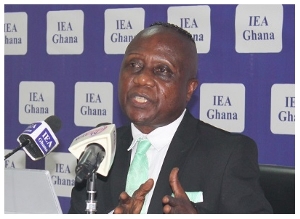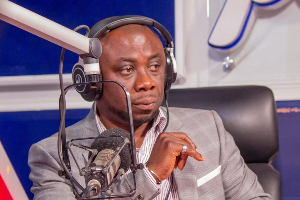The Bank of Ghana’s (BoG) Monetary Policy Committee (MPC) is later this month expected to make only a modest cut to its benchmark Monetary Policy Rate (MPR), despite significant drops in inflation and signals of rate cuts from its counterpart in the U.S, the Federal Reserve.
The MPR represents the rate at which the central bank makes short-term lending to commercial banks and serves as a signal for the direction it would like interest rates and money supply to go as part of its inflation-targeting mandate.
This conservative stance, according to the Institute of Economic Affairs (IEA) as captured in its recent Economic Outlook for July-August 2024, highlights the complex challenges facing the nation’s monetary policy.
The IEA report suggests that while conditions seem ripe for a substantial rate cut – by about two hundred basis points – the BoG is likely to reduce its policy rate by no more than 100 basis points from its current 29 percent level.
“It is appropriate that the MPC cuts its PR by at least 200 basis points to reflect the sharp decline in inflation…but it’s not likely to cut it by more than 100 basis points,” the IEA said.
This cautious approach comes despite inflation plummeting from 54.1 percent in December 2022 to 20.9 percent in July 2024 – a 33.2 percentage point decline.
“The huge disparity between declines in inflation and the Policy Rate suggests a disconnect. The Policy Rate is artificially high and has in itself not been effective in controlling recent inflation,” the note added.
The IEA’s analysis points to a paradox in the nation’s monetary policy. While the International Monetary Fund (IMF) has described Ghana’s policy rate as the highest in real terms in sub-Saharan Africa, the effectiveness country’s inflation remains among the regions’ highest. This contradiction raises questions about the current monetary strategy’s effectiveness.
Adding to this complexity is the anticipated easing of U.S. monetary policy. The Federal Reserve has signalled intentions to cut rates three times in the remainder of 2024 – a move that typically benefits emerging markets like Ghana by reducing pressure on their currencies and potentially attracting capital flows.
However, the BoG’s hands appear to be tied by its agreements under the IMF’s Extended Credit Facility (ECF).
“The MPC is constrained under the ECF to maintain a tight monetary policy stance. This external commitment limits their ability to respond flexibly to domestic economic conditions,” the economic policy think-tank noted.
The IEA argues that Ghana’s current inflationary pressures are primarily driven by supply and cost factors, rather than demand. As such, they suggest that effectively combatting inflation would require a more targeted approach – necessitating collaboration between the central bank and government to address these specific drivers.
“Fighting Ghana’s current inflation requires targetting directly the supply and cost drivers through a collaborative effort between the Bank of Ghana and the government,” the IEA report states.
While a potential weakening of the U.S. dollar could provide some short-term relief for the cedi, experts’ stress that lasting currency stability will require addressing fundamental structural and macroeconomic weaknesses.
Concerns also linger over the impact of a relatively high policy rate on lending to businesses and households.
The BoG’s latest Monetary Policy Report for July 2024 indicates unevenness regarding credit conditions.
The report showed a significant increase of non-performing loans (NPLs) in the banking sector, even as credit to the private sector continues to grow.
According to the report, the NPL ratio increased to 24.2 percent in June 2024 – up from 18.7 percent a year earlier. This rise occurred alongside a 17.7 percent expansion in private sector credit, which reached GH¢78.1billion.
“The rise in NPL ratio during the period under review was explained by higher growth in the NPL stock relative to growth in total loans,” BoG stated in its report.
The report highlights a shift in credit allocation, with the private sector now accounting for 92.4 percent of total credit – up from 90.8 percent in June 2023. Conversely, public sector credit contracted by five percent.
Despite these challenges, the Credit Conditions Survey indicates a net easing in the overall stance on loans to enterprises and households. The BoG notes, “Banks projected their overall stance on enterprise loans to record a net tightening in July and August 2024 from a tightening in all components of enterprise loans apart from loans to large enterprises”.
On the demand side, the report states: “The June 2024 survey further indicated a soaring in overall demand for enterprise loans from increases in the demand for loans on all components of enterprise loans”.
However, the outlook for household loans differs. “Over the next two months, banks expect a slump in the demand for both consumer credit and loans for house purchases to drive a decrease in overall demand for household loans,” BoG reported.
Business News of Tuesday, 10 September 2024
Source: thebftonline.com

















